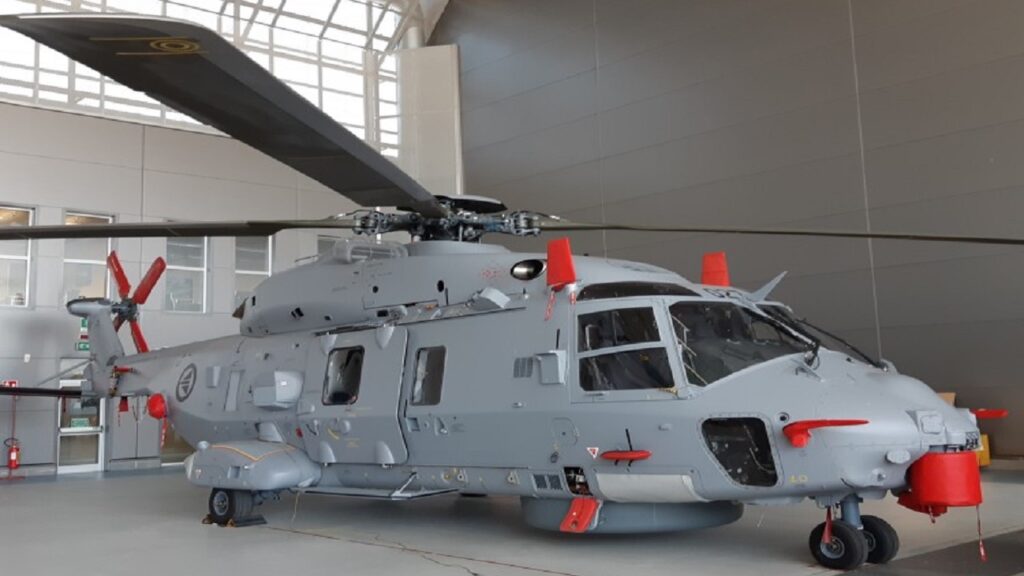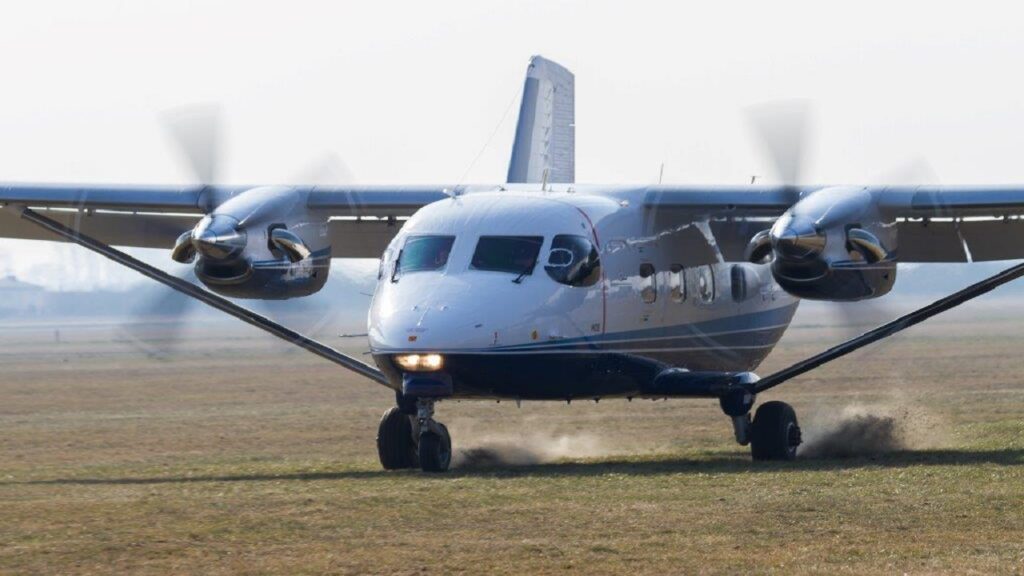The Super Lynx is the export version of the Lynx helicopter from AgustaWestland (formerly GKN Westland Helicopters). The UK Royal Navy is equipped with the Lynx HMA Mark 8 helicopters and the UK Army with AH Mk 7 and AH Mk 9 Lynx scout / attack helicopters.
The naval Super Lynx is a multi-role helicopter for anti-surface warfare, anti-submarine warfare, search and rescue and utility operations.
Over 200 naval Lynx helicopters are operational with 11 navies and are battle proven in several major conflicts including Operation Iraqi Freedom in March / April 2003. Over 200 Lynx scout / attack helicopters have also been produced.
Super Lynx helicopter orders and deliveries
The Super Lynx has been ordered by Germany (seven) and South Korea (13). Germany and Denmark have upgradedtheir Lynx helicopters to Super Lynx standard. The first Super Lynx for Germany was delivered in July 1999 (for service on the Type 122 and Type 123 frigates), for Singapore in December 1999 and for Denmark in November 2000.
The Super Lynx 300 has been ordered by Malaysia (six), South Africa (four for the Valour Class Meko A-100 frigates), Oman (16) and Thailand (two). The Malaysian Navy was the first country to receive the Super Lynx 300 in September 2003 and all six were delivered by July 2004. The Royal Air Force of Oman received its first Super Lynx 300 in June 2004. Two helicopters were delivered to the Royal Thai Navy in September 2004 and entered operational service in February 2005. The four helicopters for South Africa were delivered in July 2007 and entered service in February 2008.
AW159 Future Lynx helicotper
In March 2005, the UK Ministry of Defence selected a version of Super Lynx 300, known as Future Lynx, as the preferred option to replace the UK Army’s Mk 7 and Mk 9 Lynx helicopters and Royal Navy Lynx HAS.3 and HMA.8. helicopters. A contract for 70 (plus ten options) Future Lynx helicopters was awarded in June 2006, 40 for the Army and 30 for the Navy. First of the Future Lynx, also known as AW159 Lynx, was completed in November 2009, initial deliveries were in 2011 and the helicopter will enter into service in 2014 with the British Army and 2015 with the Royal Navy.
Suppliers so far selected for Future Lynx include: GKN Aerospace for the airframe, LHTEC CTS800-4 engine (fitted to the Super Lynx 300), Thales UK for avionics, communications and navigation systems, Smiths Aerospace for SDS-5000 cockpit display system and Health and Usage Monitoring System (HUMS) and Selex Sensors & Airborne Systems Helicopter Integrated Defensive Aids System (HIDAS).
Super Lynx 300
The latest generation, the Super Lynx 300 took its maiden flight in June 2001. The first production version (for the Malaysian Navy) flew in May 2002. It incorporates an all new glass cockpit with seven colour active matrix LCDs (liquid crystal displays), new avionics, improved airframe, more powerful CTS800-4N engines (jointly developed by Rolls-Royce and Honeywell partnership, LHTEC) with FADEC (Full Authority Digital Electronic Control).
The new engines can operate more effectively in hot and high conditions.
Design
The Lynx airframe is constructed of composite and light alloy. The non-retractable tricycle-type landing gear is designed for the helicopter to operate from small ships in Sea State 6 and features oleo-pneumatic struts, which absorb the shock of a 6ft/s descent rate.
A hydraulically operated harpoon deck-lock securing system secures the helicopter to the deck. The main wheels can be towed out, allowing the aircraft to turn into the wind while the deck-lock harpoon remains engaged. This removes the need for the ship to change course.
The cabin space of approximately 5.2m³ can accommodate up to nine troops. Up to 1,360kg of cargo can be underslung from an external cargo hook for ship-to-shore and ship-to-ship replenishment.
Avionics
The avionics suite within the Super Lynx includes four liquid crystal display units, two secondary flight instruments, two electronic power system instrument displays, two dual redundant control display navigation units, data transfer module and health and usage monitoring system (HUMS).
Other avionics include central warning panel, attitude and heading reference system (AHRS), global positioning system (GPS), inertial navigation system (INS) and cabin communication system.
Weapons
Sea Skua is an all-weather anti-ship missile developed by MBDA (formerly Matra BAe Dynamics) to provide medium- and long-range defence. Countries deploying the Sea Skua missile include the UK, Bahrain, Germany, South Korea, Brazil and Turkey. Malaysian Navy Super Lynx 300 will also be armed with Sea Skua. The Lynx carries four Sea Skua missiles. The range of both the semi-active radar-guided Sea Skua missile and the Seaspray radar is approximately 25km, which gives a stand-off capability to the Lynx helicopter.
Super Lynx can carry a range of depth charges, including the Mark 11 depth charges, and torpedoes, including the Mark 44, Mark 46, the A244S and the Stingray torpedoes.
UK Royal Navy Lynx HMA8 helicopters are being fitted with Defensive Aids Subsystem (DAS), following operational experience in Iraq.
The DAS consists of ATK AN/AAR-47 missile warner, Selex Sensors & Airborne Systems AN/ALQ-144A infrared jammer and Selex M147 flare dispenser. An initial 12 helicopters are being fitted with the system.
Sensors
Super Lynx is equipped with a 360° scan radar, either the BAE Systems (now Selex S&AS) Seaspray Mark 3000 (being fitted on the German Lynxes) or the Telephonics RDR 1500, mounted in the chin fairing under the nose.
The UK Royal Navy Lynx, (Lynx HMA Mark 8) has a Seaspray Mark 1 radar housed in a modified chin radome and a Sea Owl thermal imager from Selex S&AS. Sea Owl is fitted on a gimballed mount in the nose of the helicopter, above the radar. Super Lynx has a forward looking infra-red system for passive target identification. Selex S&AS Multi-Role Turret thermal imaging system is being fitted to the Lynxes for Germany. FLIR Systems 2000HP and Safire FLIR have also been fitted to the Lynx.
The Super Lynx is equipped with an AN/AQS-18 active dipping sonar from L-3 Communications. The operation of the dipping sonar is by an hydraulically powered winch and the automatic flight control system includes a cable hover mode control. The naval Lynx can be equipped with a magnetic anomaly detector.
The Lynx may be fitted with a range of surveillance equipment including the Vipa 1 reconnaissance pod from Thales Optronics (Vinten) or the Agiflite reconnaissance camera.
Propulsion
The Lynx is powered by two Rolls Royce Gem 42-1 turboshaft engines, which each provide 835kW. The fully developed Gem Mark 42 engines are fitted on the British, French, Danish, Netherlands and Norwegian Lynx helicopters. The Gem is a fully marinised engine for operation in harsh erosive and corrosive environments, from desert and tropical conditions to freezing and arctic environments.
Super Lynx 200 and 300 are fitted with CTS800-4N turboshaft engines from LHTEC which have full authority digital engine control (FADEC).
Performance
The Super Lynx can fly at a maximum speed of 324km/h. The cruise speed is 245km/h. Its range is 564km. It can remain in air for a maximum period of three hours 25 minutes. The helicopter weighs around 3,291kg and its maximum take-off weight is 5,330kg.




